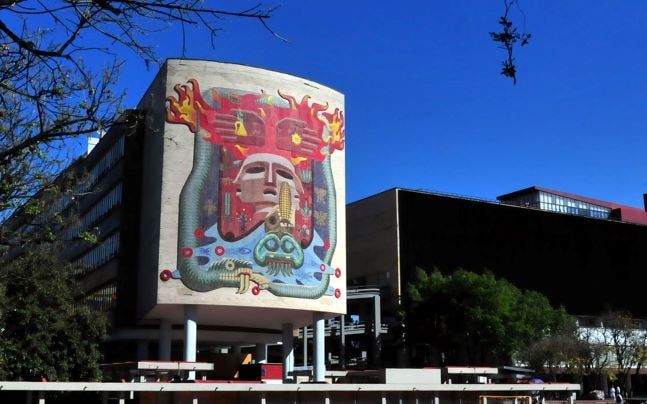Mural "Life, Death, Mestizaje, and the Four Elements" by Francisco Eppens
The mural titled "Life, Death, Mestizaje, and the Four Elements" was painted by Francisco Eppens Helguera and is considered to be one of the most famous paintings on the main campus of University City.





